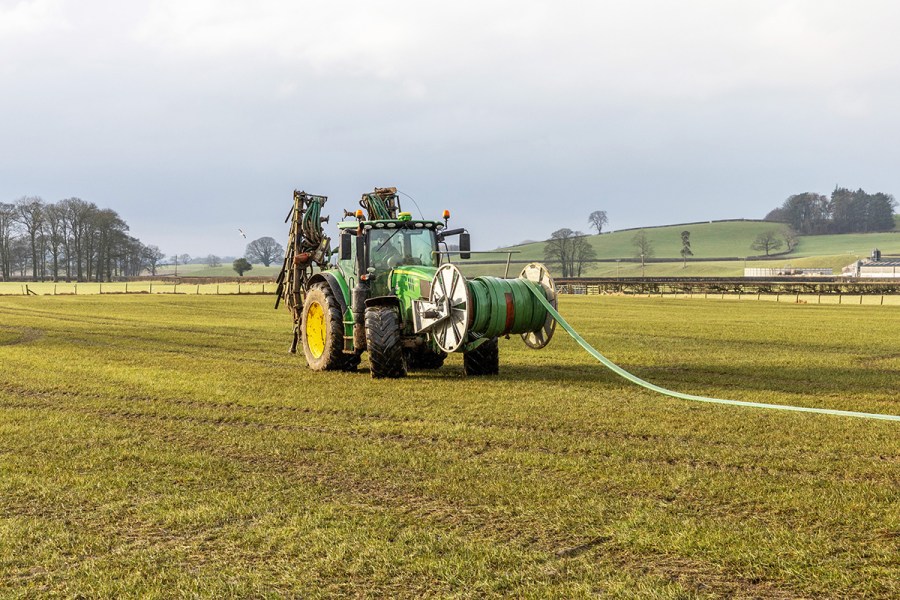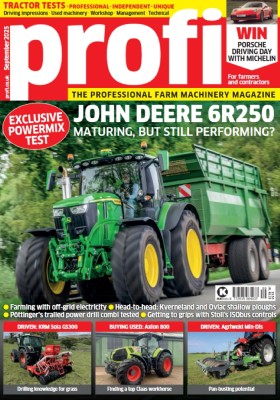Helping its customers to realise the full value of slurry, Cumbrian firm Haworth Agricultural Contractors has invested in Near Infra-Red (NIR) sensing to improve application accuracy for umbilical slurry spreading, creating traceability and compliance for its customers.
KEEPING IT BRIEF
- Application accuracy improves slurry value.
- Splash plate has half-width shut-off.
- MyJohnDeere used for fleet management.
Slurry and silage form the lion’s share of the general contracting business established by Kevin Haworth based at New Field Farm, Kirkby Lonsdale. Though it is slurry application that is gaining the most traction, as the family-run firm remains focussed on supporting its livestock and dairy customers.
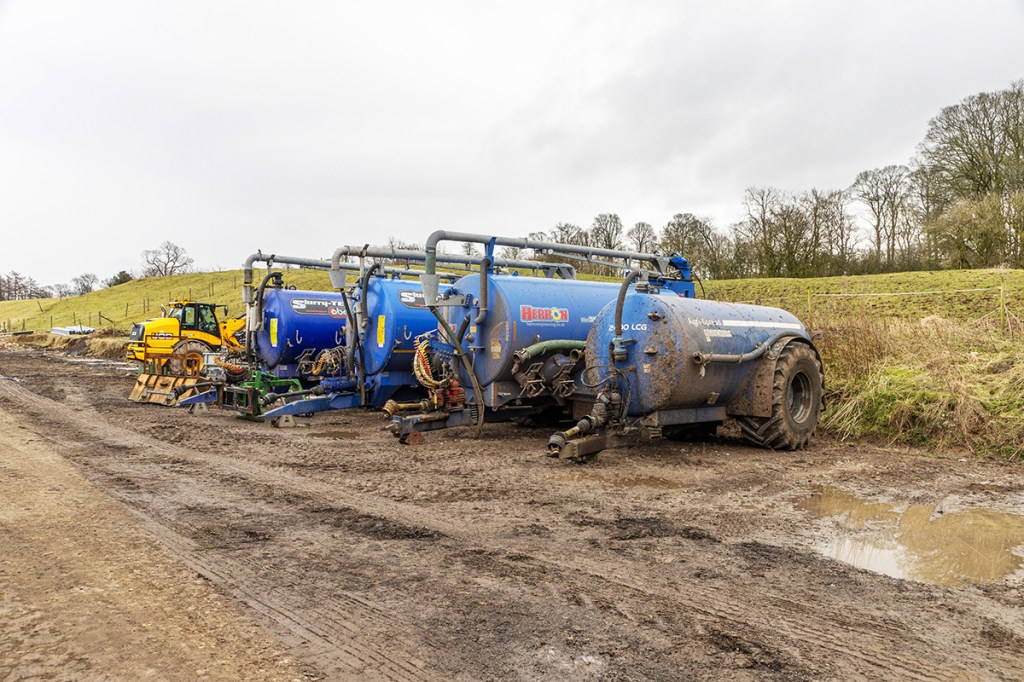
Each year, the firm applies around 70,000m³ of slurry and to meet this demand it operates a fleet of nine vacuum tankers, three of which are equipped with booms to assist with emptying over hedges, and two of them carry dribble bars. While the Haworth’s umbilical system is based on five- and four-inch pipe runs, with a 60m³ Hogg Engineering nurse tank providing a buffer when working remotely. AgQuip booms offer application widths of 12m as a dribble bar and 10m when using dual-outlet splash plates.
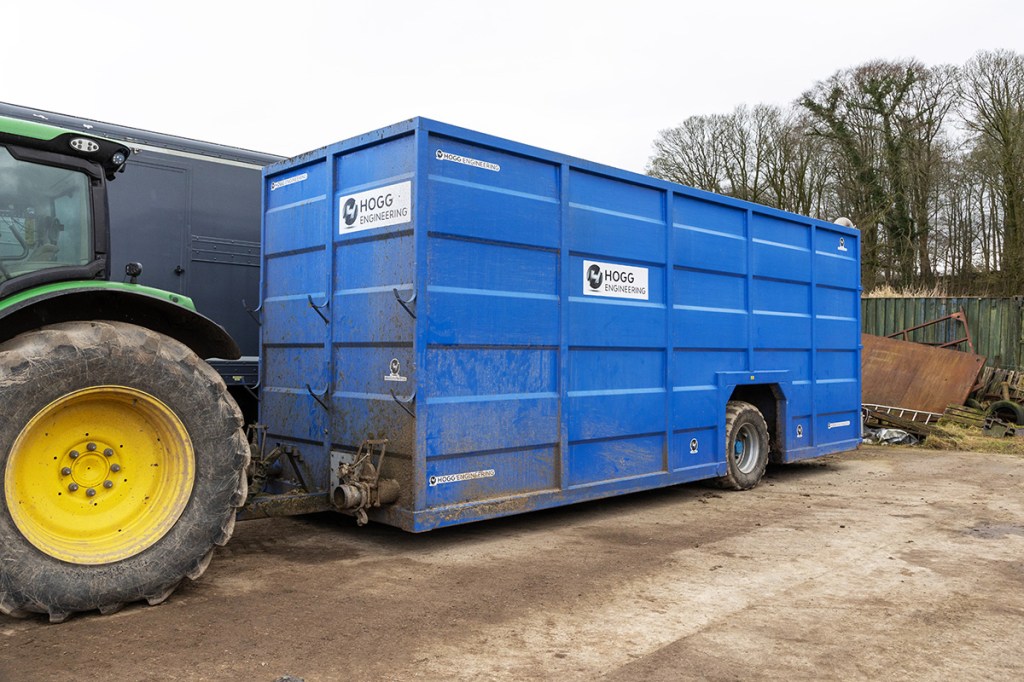
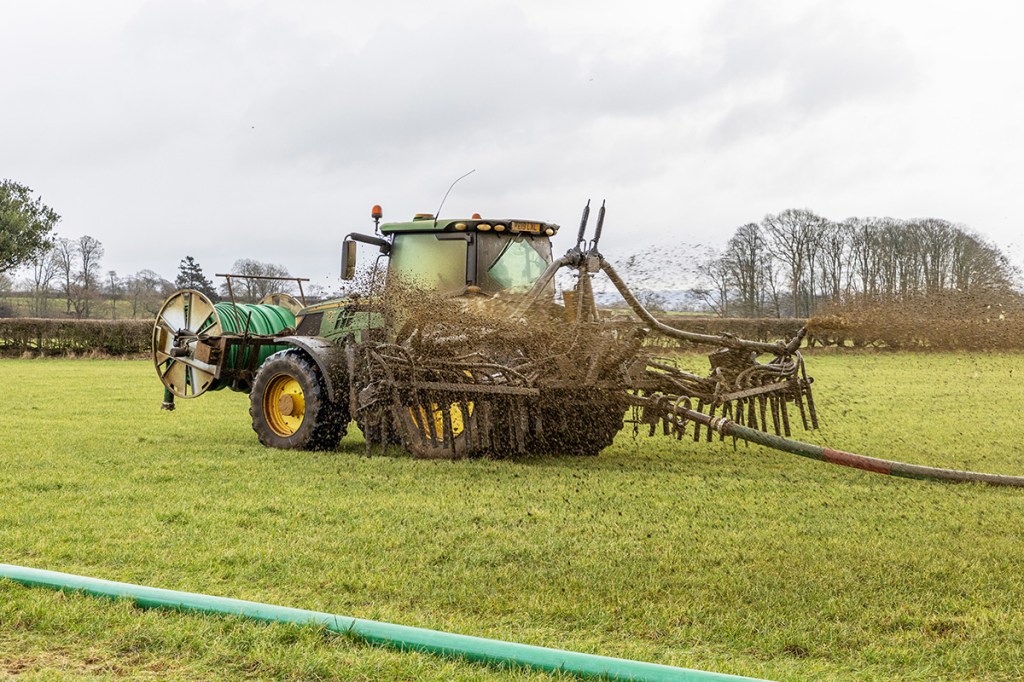
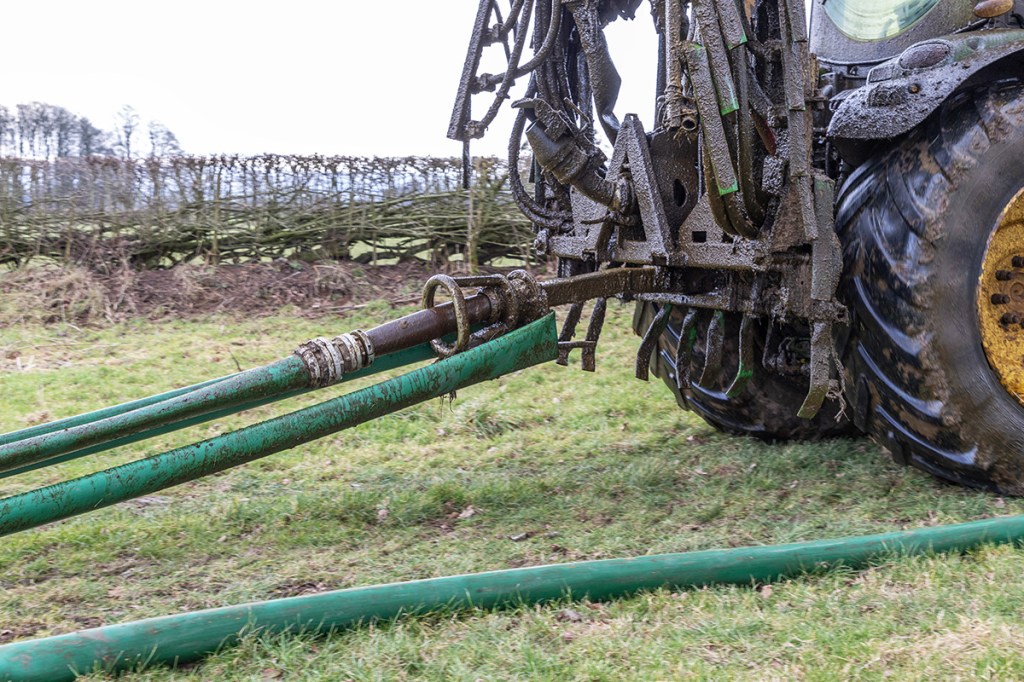
Adding knowledge
Son Lyam Haworth has been instrumental in pushing forward with developing the precision and efficiency of its umbilical slurry spreading operation, and as a result has recently added Near Infra-Red sensing (NIR) to boost application accuracy and improve compliance with its umbilical equipment.
“We provide full traceability for all our customers with everything we apply, whether that’s slurry or bagged fertilisers,” explains Kevin Haworth. “And this has now become an essential part of our application process. Lots of our customers not only see the benefit of this technology, but they are actively asking for it, for compliance.”
Kevin and son Lyam operate in an area dominated by livestock and grassland farms. Land comprises upland and lowland areas surrounded by nature reserves, national parks and areas of outstanding natural beauty. Fortunately, there are no NVZs to contend with, which means slurry applications have evolved into a near year-round process, as Lyam Haworth explains.
“Along with the application accuracy we can now provide for customers, the umbilical system means tankers are not running in and out of gateways, and field compaction is reduced too,” he says. “And this helps to extend our spreading season into an almost year-round process. Umbilical is a far more efficient process of spreading slurry, and when working remotely, we can use our fleet of tankers to haul slurry from farm to the nurse tank.”
With the largest customer having a 300-cow herd, and field sizes from quarter of a hectare up to 12ha in size, agility is the key. A John Deere 6155R is used to head-up the umbilical system, carrying front- and rear-mounted hose reels, each with 1,000m of hose, plus a rear-mounted hydraulic folding boom complete with NIR sensor to monitor the N, P and K levels in slurry and manage flow rates.
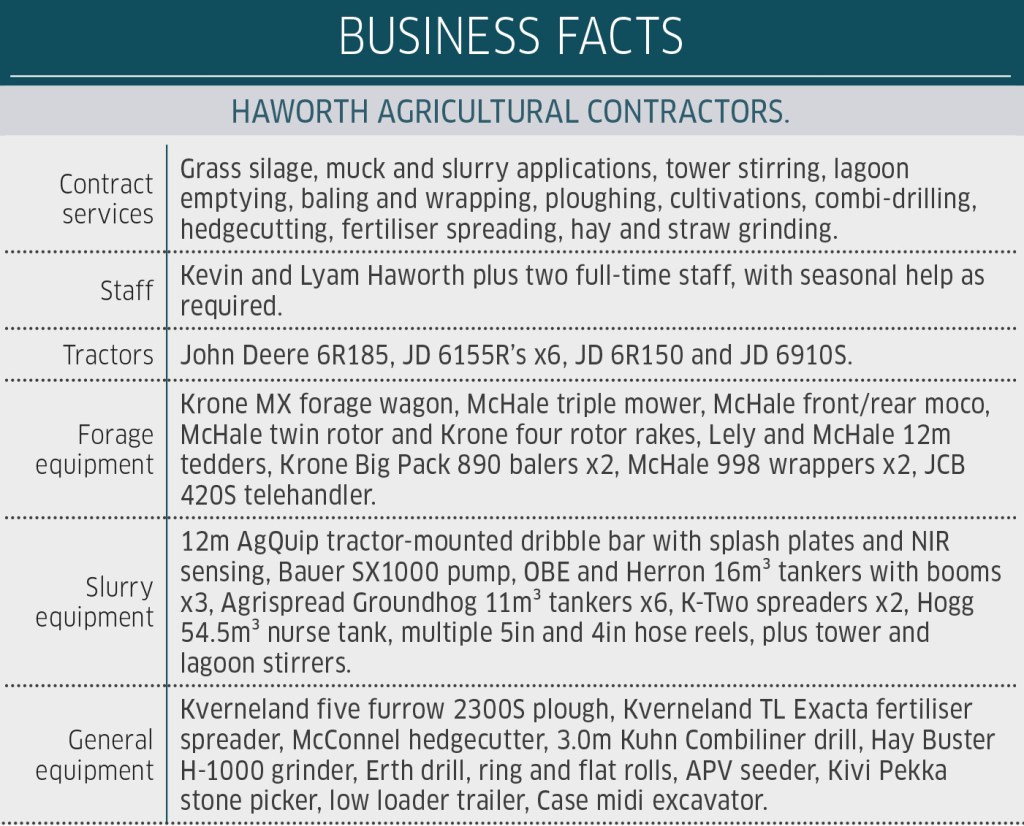
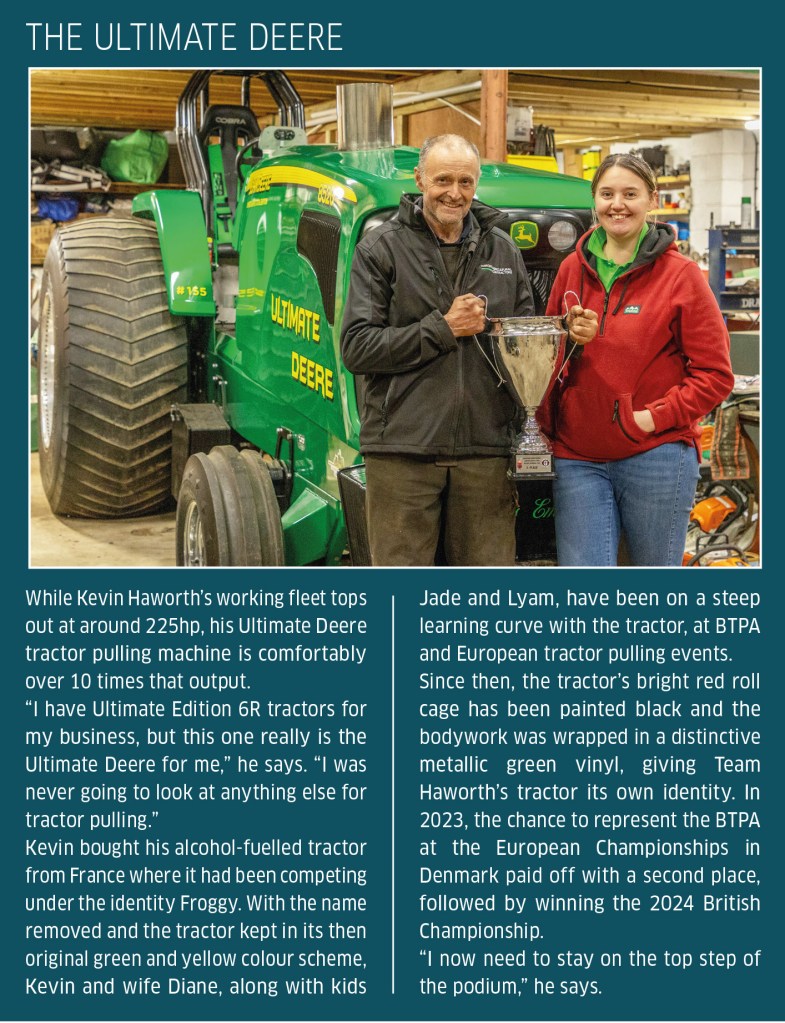
In the mix
“Helping customers to make the most of their own resources is a process that has put much more emphasis on slurry tower and lagoon stirring,” he says. “A good mixing will spread the nutrients throughout the slurry, rather than leaving everything to chance – and that’s just too inconsistent.”
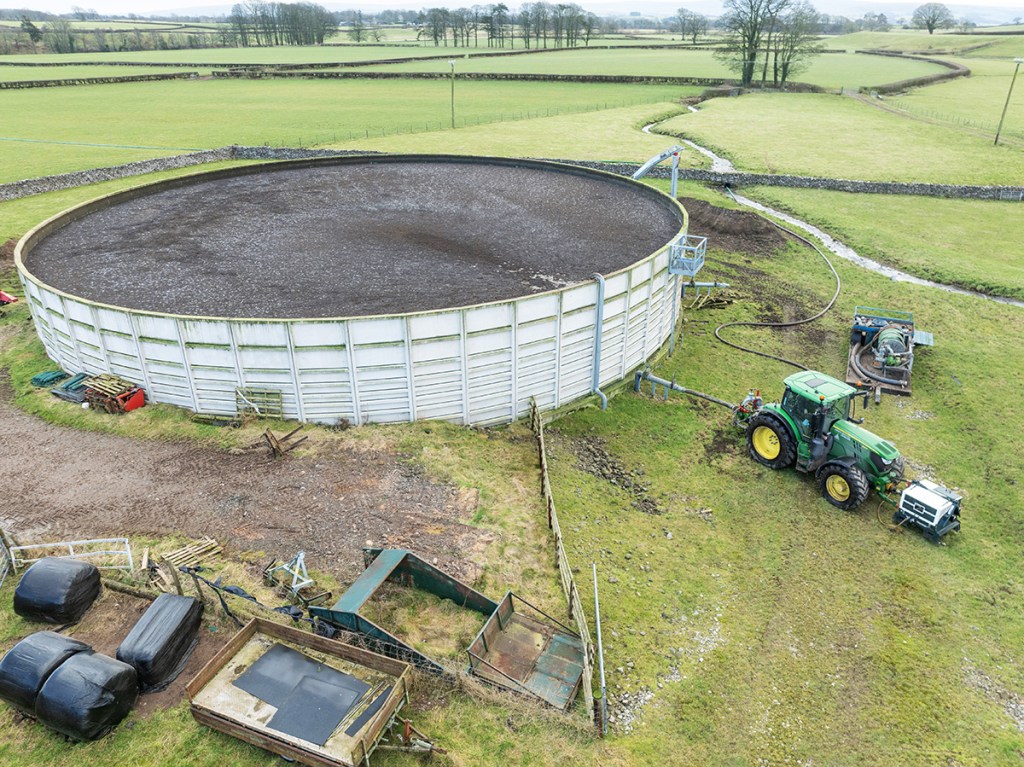
With AutoPowr, the slurry application rates take control of the tractor’s forward speed, increasing or decreasing automatically to maintain the chosen rate and nutrient levels. For the task, a combination of five-inch and four-inch hose is used, which Lyam says offers useful output without being too heavy to draw across a field.
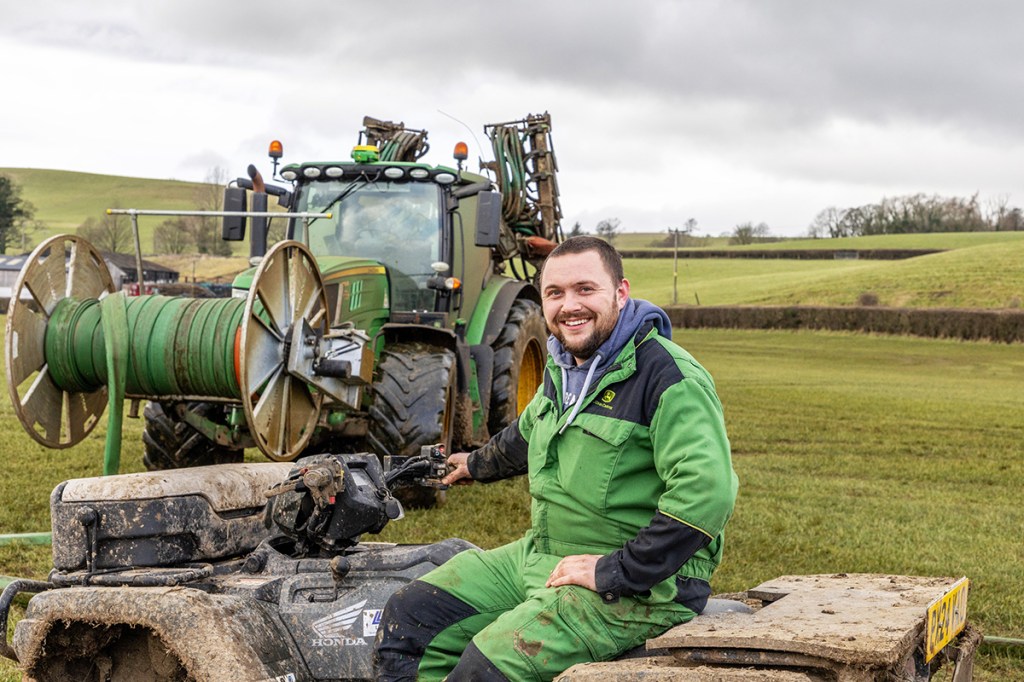
“I’m always mindful of compaction,” says Lyam. “We’ve tried to keep tractor weight low by using a 6155R, which means there’s a limit to the size of hose we can pull without breaking traction and damaging the surface of customer’s grass fields. Pipe is heavy when it’s full of slurry and you’ve still got to make headland turns without causing damage.”
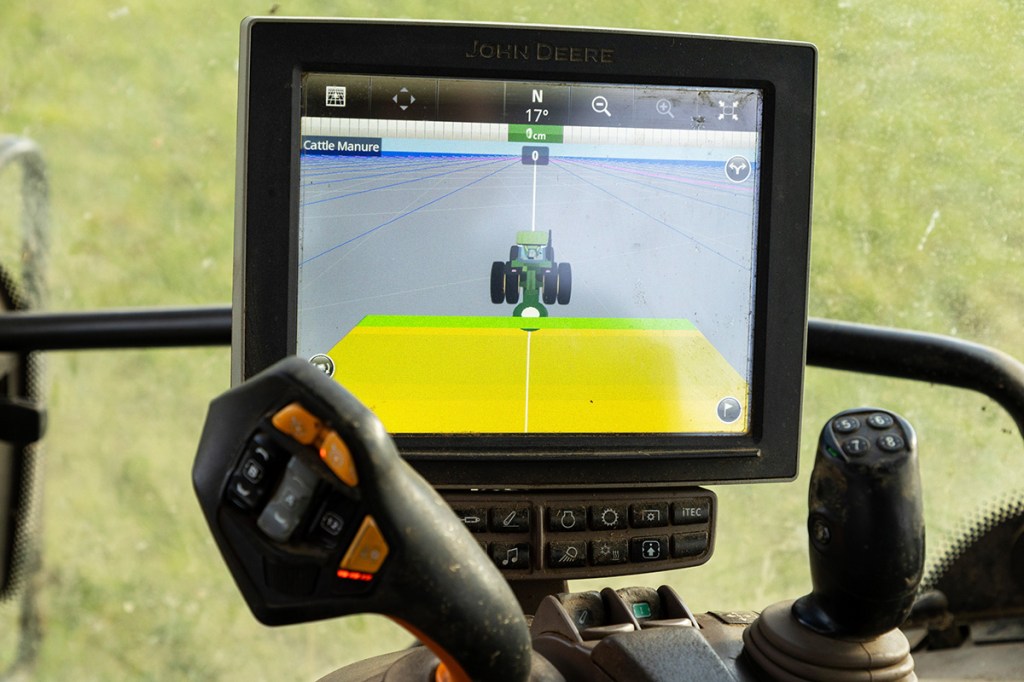
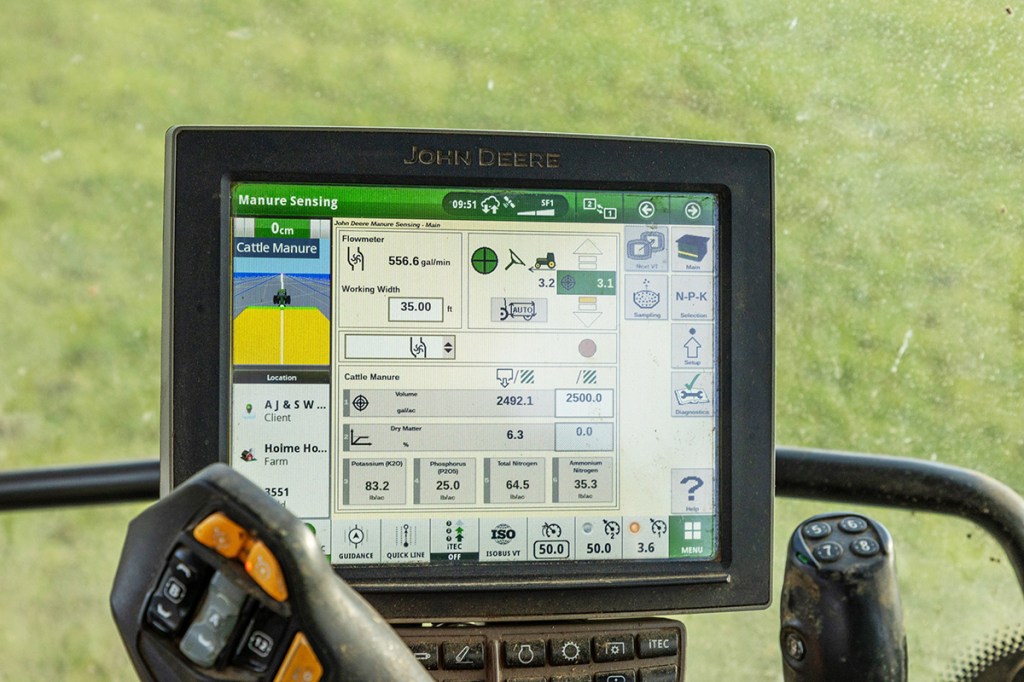
He says that uptake on NIR is around half of what the firm applies with its umbilical system, and it remains an optional aspect for the umbilical slurry job.
“It does add a chunk of cost to the umbilical service, simply because the technology isn’t cheap to buy in to – but it is accurate,” he says. “And as part of the NIR service, we do provide customer access only to their own farm’s application maps through MyJohnDeere, so they can benefit from traceability and compliance. The maps show potassium, phosphorous, total nitrogen and ammonium nitrogen, plus dry matter values applied.”
“With the help of NIR, more and more customers are gradually seeing the benefit of what’s in their towers and lagoons. And when they see how much it can reduce their spend on bagged fertiliser, the additional cost of using NIR is no longer a cost – it becomes a benefit.”
Dribble and splash
Around half of what goes through the AgQuip boom is splash-plated at a 10m working width, with the remainder applied using the dribble bar covering 12m. And for every cut of grass taken, Lyam will be back putting slurry on, to fuel the next flush of grass.
“It’s been surprising to see how the dribble bar can leave concentrated strips of slurry in the bottom of the sward, and it can still be seen after first cut silage, and this concentrates the ash content,” he says. “So, we’ve an increasing number of customers who prefer the splash-plate approach for its finer, better spread pattern. Yes, there are some wind losses but keeping the pressure down does help, though it’s a far muckier job than just dribbling slurry on the ground – so we do our best to accommodate customer requirements.”
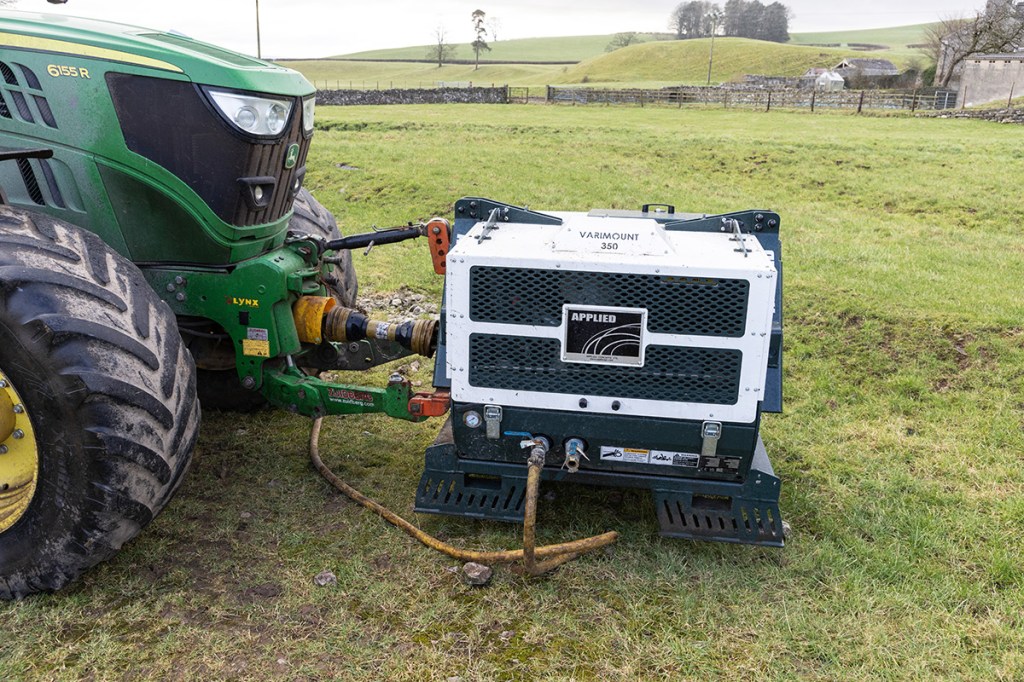
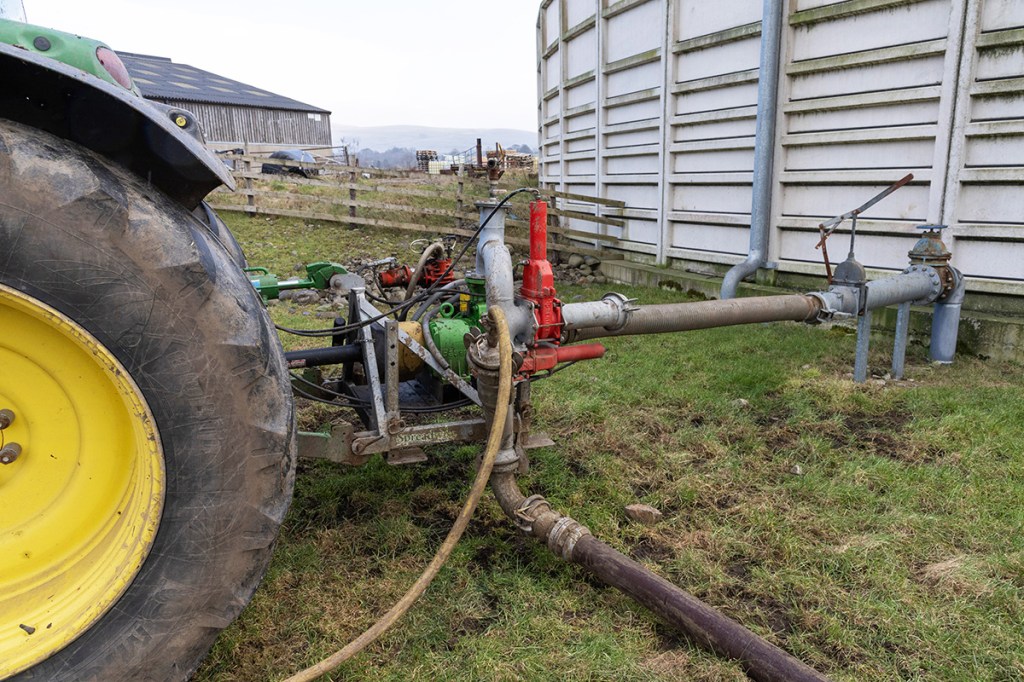
Team work, dream work
The umbilical team is currently a two-person operation, with one stationed at the lagoon or tower, using a Bauer SX1000 pump and a front-mounted pto driven compressor to clean out those hose runs. The pump tractor arrives on-farm with a trailer carrying a spare pump, additional reels, hose fittings and quad bike, simplifying set-up.
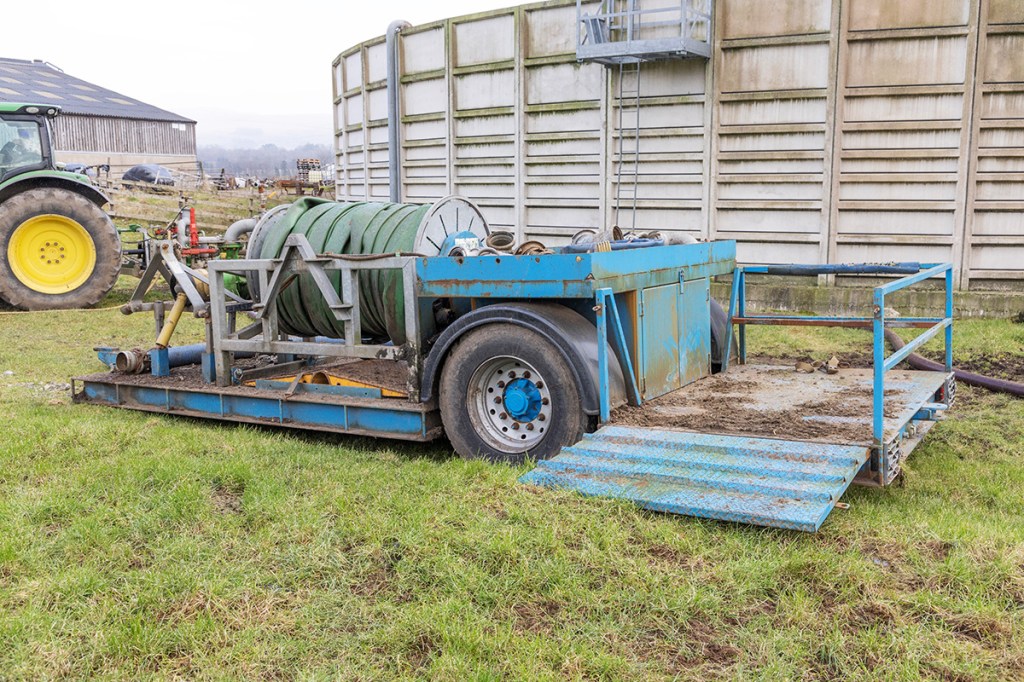
“The second pump is really for longer runs or steep uphill sections,” he says. “It would be great to adopt a remote-controlled pumping station, with remote camera view, so I could operate entirely on my own. We’re lucky to have operators who are prepared to sit on a pump all day long, effectively twiddling their thumbs until they’re needed, though I’m sure we can make better use of their time and skills if we can develop a remote pumping solution.”
Topping up
Fertiliser spreading goes hand-in-hand with the umbilical process, with spreader technology complimenting the accuracy of applied slurry values. It sees the firm applying fertiliser to around 4,000ha each year for customers, carried out with a Kverneland Exacta TL Geospread.
“Knowing what nutrients we’ve put on with slurry makes it easy to top-up with fertiliser, without over-doing it,” says Kevin. “When it comes to fertilisers, we do have to consider what goes on and where. And Lyam had heard about how good Kverneland’s Geospread was, so that was the route we took.”
With plug and play ISObus simplicity through the Haworth’s fleet of John Deere tractors, Lyam says accuracy has been beyond expectations.
“I didn’t believe it until I’d used the spreader myself,” says Lyam. “The ability to isolate areas that don’t require fertiliser, and provide traceability, is a huge asset for our business, and for our customers.”
He says the rolling landscapes in which they operate can show up the worst performance in any twin disc spreader, but he’s yet to see any form of over- or under-dosing after two full season’s spreading. And the spreader has also enabled variable rate applications to be made.
“We operate with an 18m spread width for grassland, which suits rolling and undulating ground,” he says. “But if there’s tramlines available, then our output improves. Few fields are flat, so 15km/hr is fast enough, though I’d probably change to a model with hydraulic drive next time, to eliminate the pto shaft and operate with greater fuel efficiency.”
All green
The Haworth tractor fleet is an nine-strong, all-green and yellow affair, and for a contractor, are of modest power. The biggest mule is a 6R185, with six 6155R’s making up the lion’s share of the fleet. Ultimate Edition 6R’s with Command Pro joystick have become a ‘go-to’ as is AutoPowr transmissions plus front linkage and pto, with fleet management via MyJohnDeere.
In addition, there’s a 6R150 and a 13,000-hour 6910S, with the latter likely to be a future subject for restoration. There’s no set replacement policy, with some mainstream tractors heading for 10,000 hours.
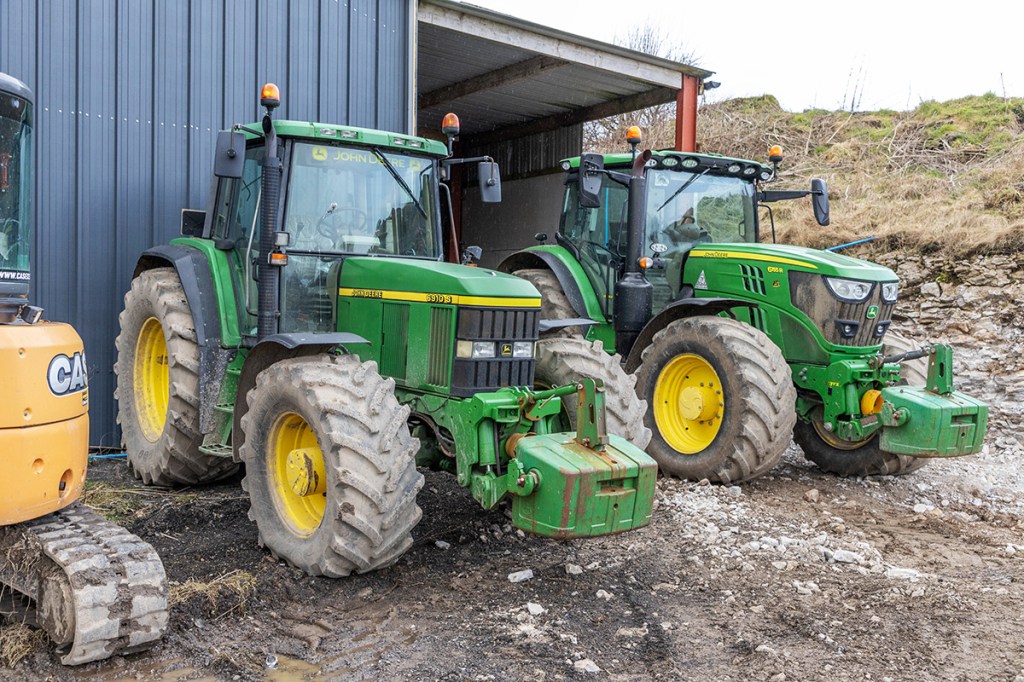
“We’re not worried about high hours,” explains Kevin Haworth. “Tractors are assessed on condition and reliability – any doubts and they’re down the road.”
Among its general contracting approach is hedgecutting, ploughing, combi drilling and lime spreading, with a new service added in the guise of hay and straw grinding.
“We bought a Hay Buster 1000 for last winter with a variety of screens as a diversification project,” says Kevin. “We reasoned that it could develop into a viable alternative for the winter, if a slurry ban ever comes into force. So far, customers have been pleased with the results, as it makes far less dust than a traditional straw chopper, and that means less product losses for customers.”
Grass business
When it comes to silage, the Haworths operate a pair of Krone Big Pack 890 square balers, making around 10,000 bales/year, along with a Krone MX forage wagon and Swadro 1400 four-rotor rake.
Wrapping is achieved using a pair of McHale 998’s, while the Irish manufacturer is also favoured for its mower conditioners too. A triple mower along with a 6.0m front/rear combination knocks down grass, and if needed, McHale and Lely 12m tedders inject some air into the crop to shorten drying times.
The firm has never ventured into the cut throat sector of self-propelled foragers, but Kevin does operate one that is owned by a neighbouring farmer. It is stored in Haworth’s yard where it is looked after by the team.
“There are plenty of choppers around here,” adds Kevin. “There’s too much of an investment required for little to no return on that investment. And in my opinion, there’s far more efficient ways of making silage, and needing fewer staff.”
It perhaps explains why the Cumbrian contracting family has invested in a Krone MX forage wagon, that it has run successfully for the last two seasons.
“The baler job is slowing a bit, but we’ve had good uptake with our forage wagon,” adds Kevin. “Compared to filing a trailer with a forager, you can get a lot of grass in a box. And that means fewer trips from field to clamp, which is also better for the local community too.”
Efficiency improvements for the 2025 season have seen the arrival of a JCB 420S ready for the clamp, along with a 12ft folding fork. “It all goes hand-in-hand with speed and efficiency,” says Kevin Haworth. “And we still have our Silopactor railway press wheels for a rolling tractor, if needed.”
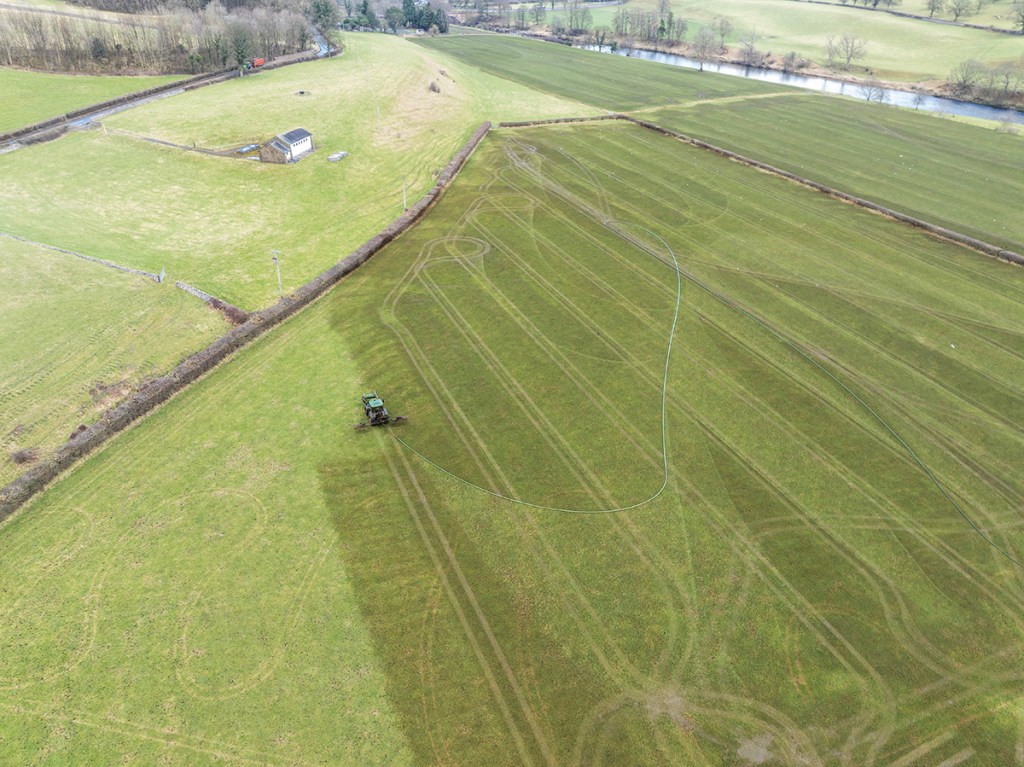
Summary
Not content with simply pouring slurry on land for the sake of emptying towers and lagoons that are nearing capacity, Haworth Agricultural Contractors has taken a pro-active approach by investing in NIR sensing for slurry, adding value to its customers business’. It is a positive example of how investing in the right technology can bring benefits to both sides of the contractor/customer relationship – the key to its success though, will be informing and educating more customers of the financial benefits it can bring to grass and forage production.
Geoff Ashcroft
For more up-to-date farming news click here and subscribe now to profi and save.

